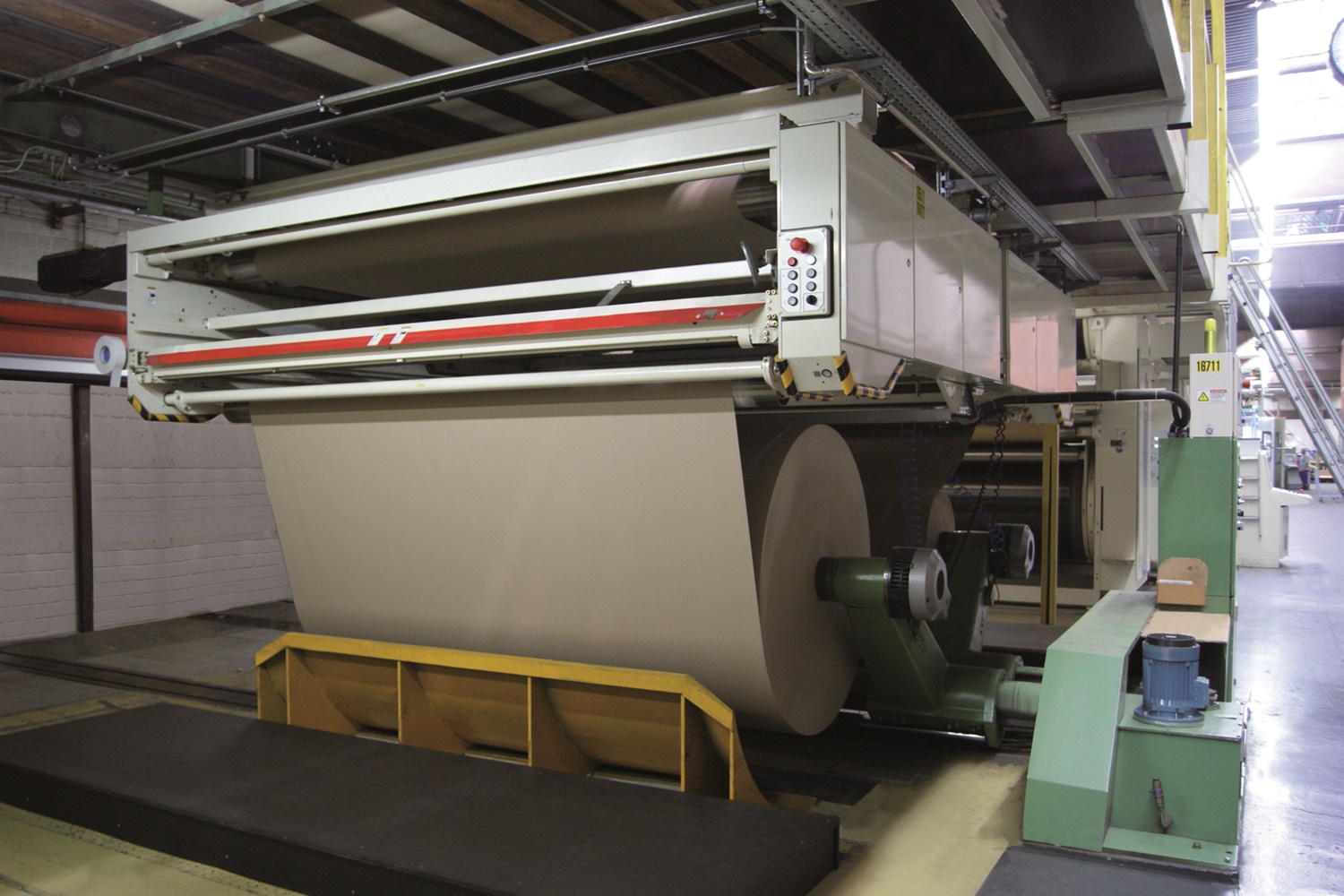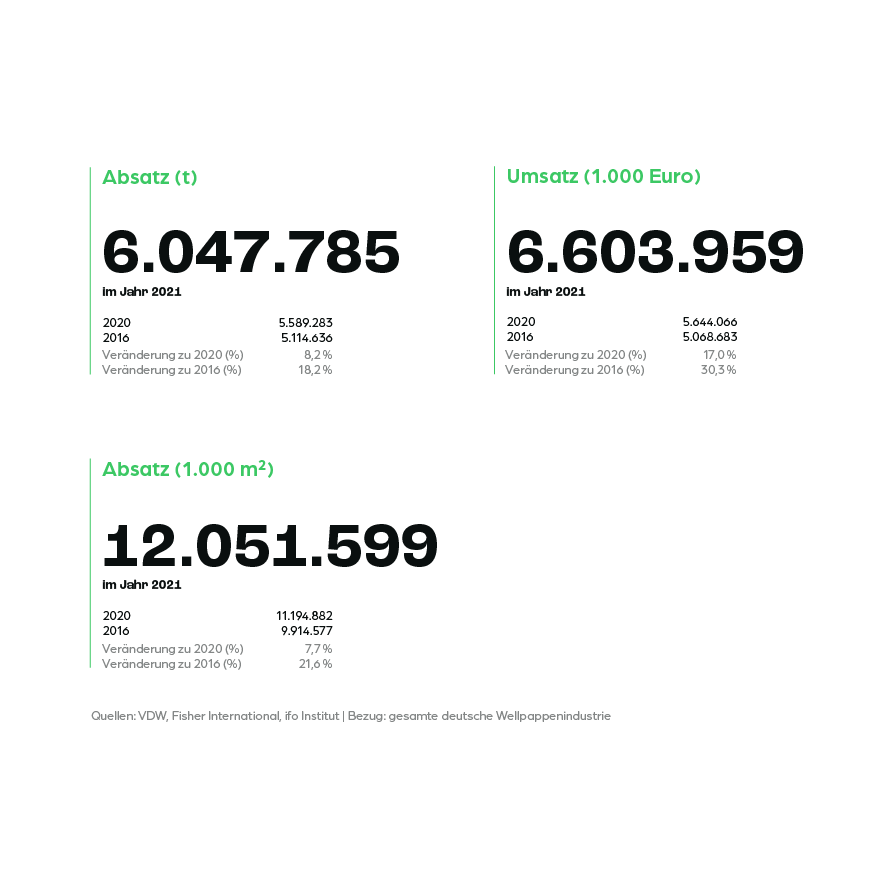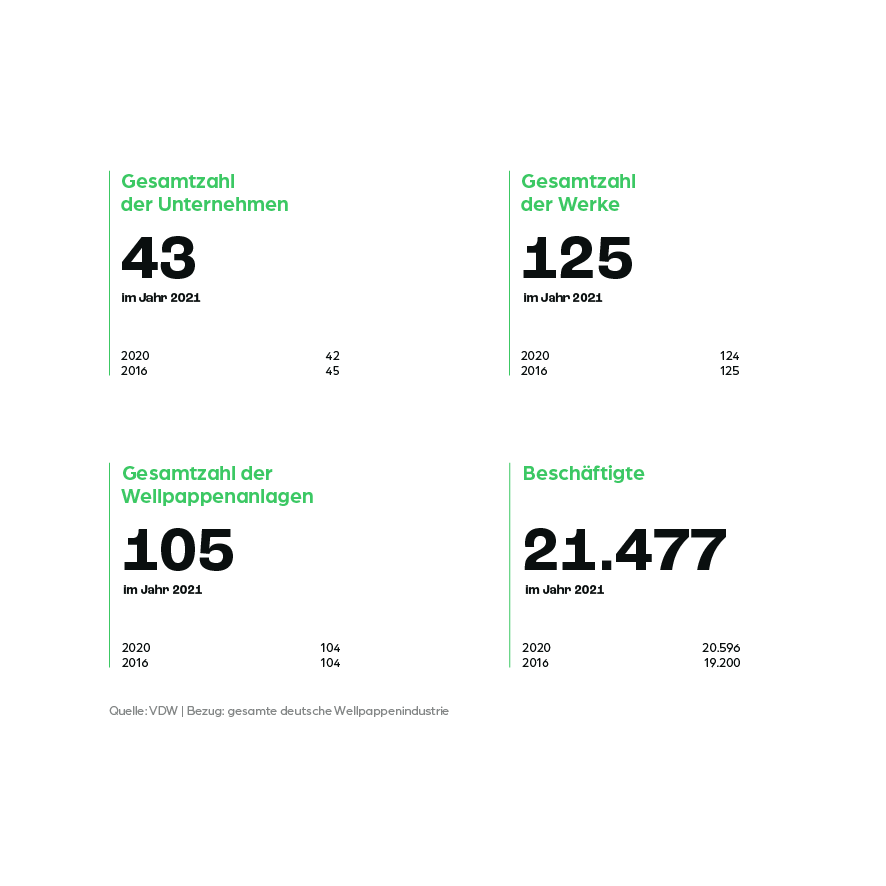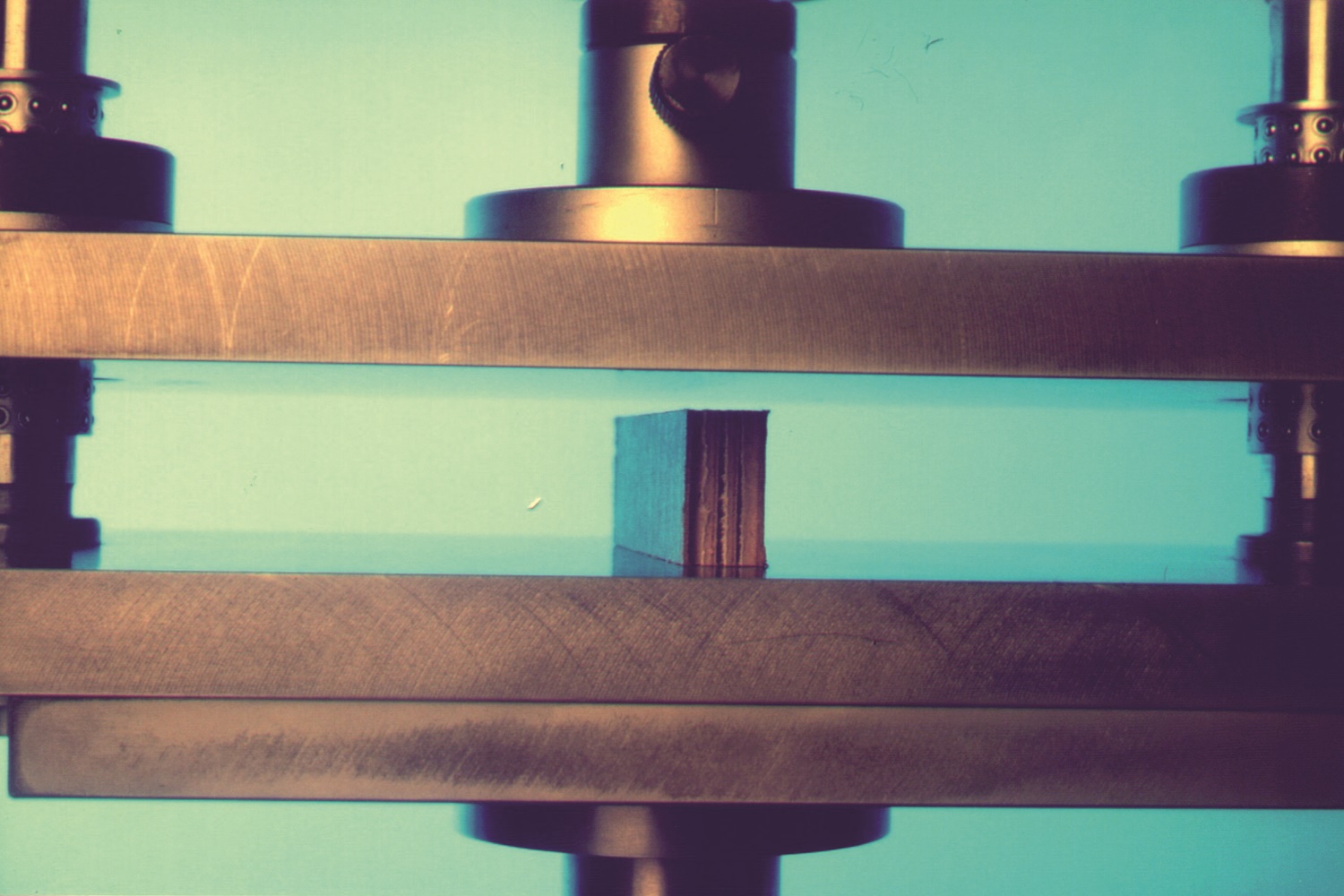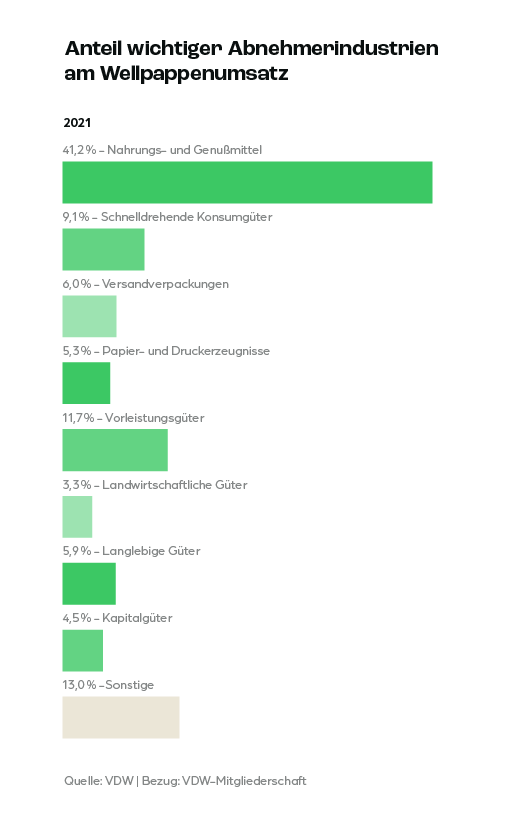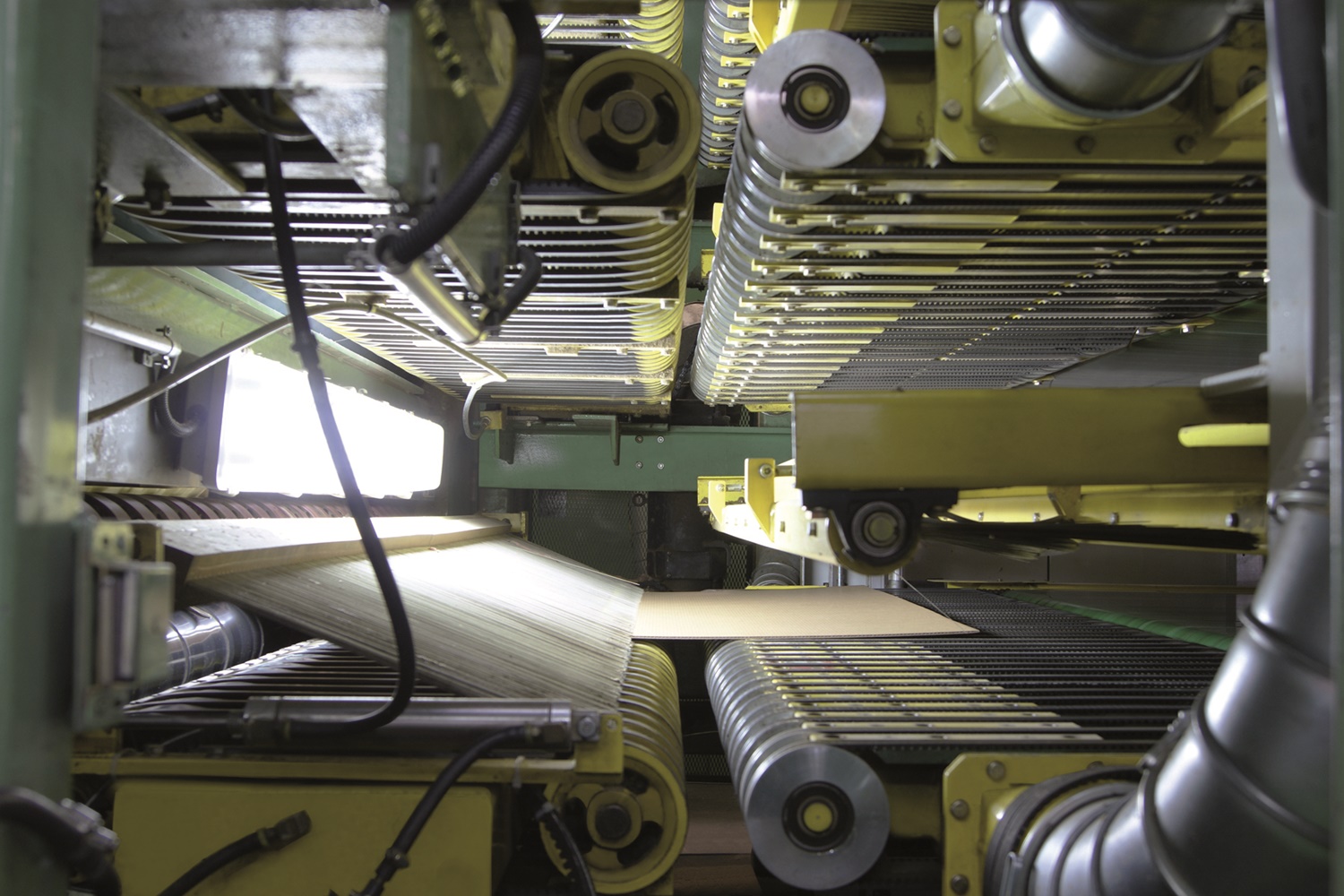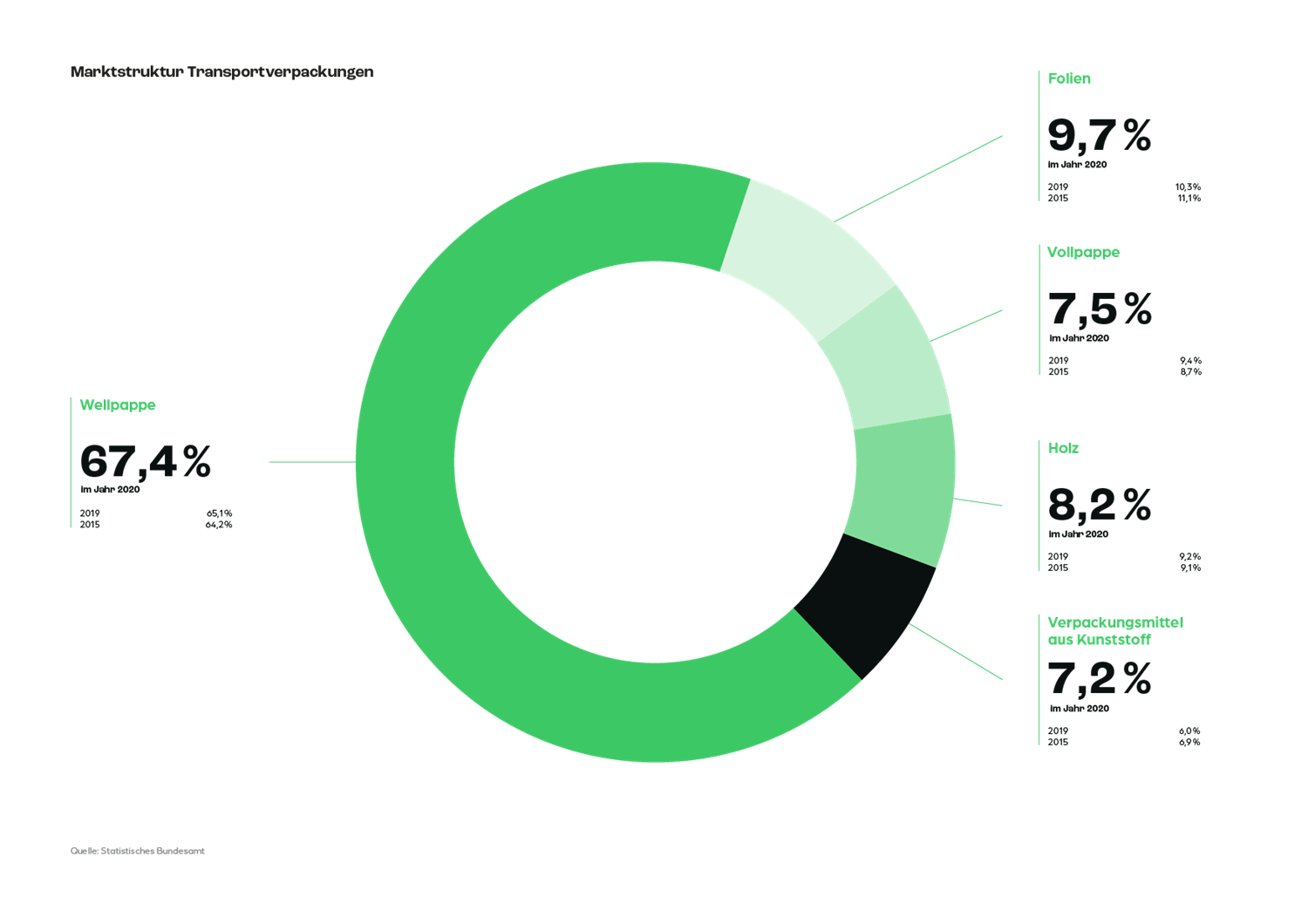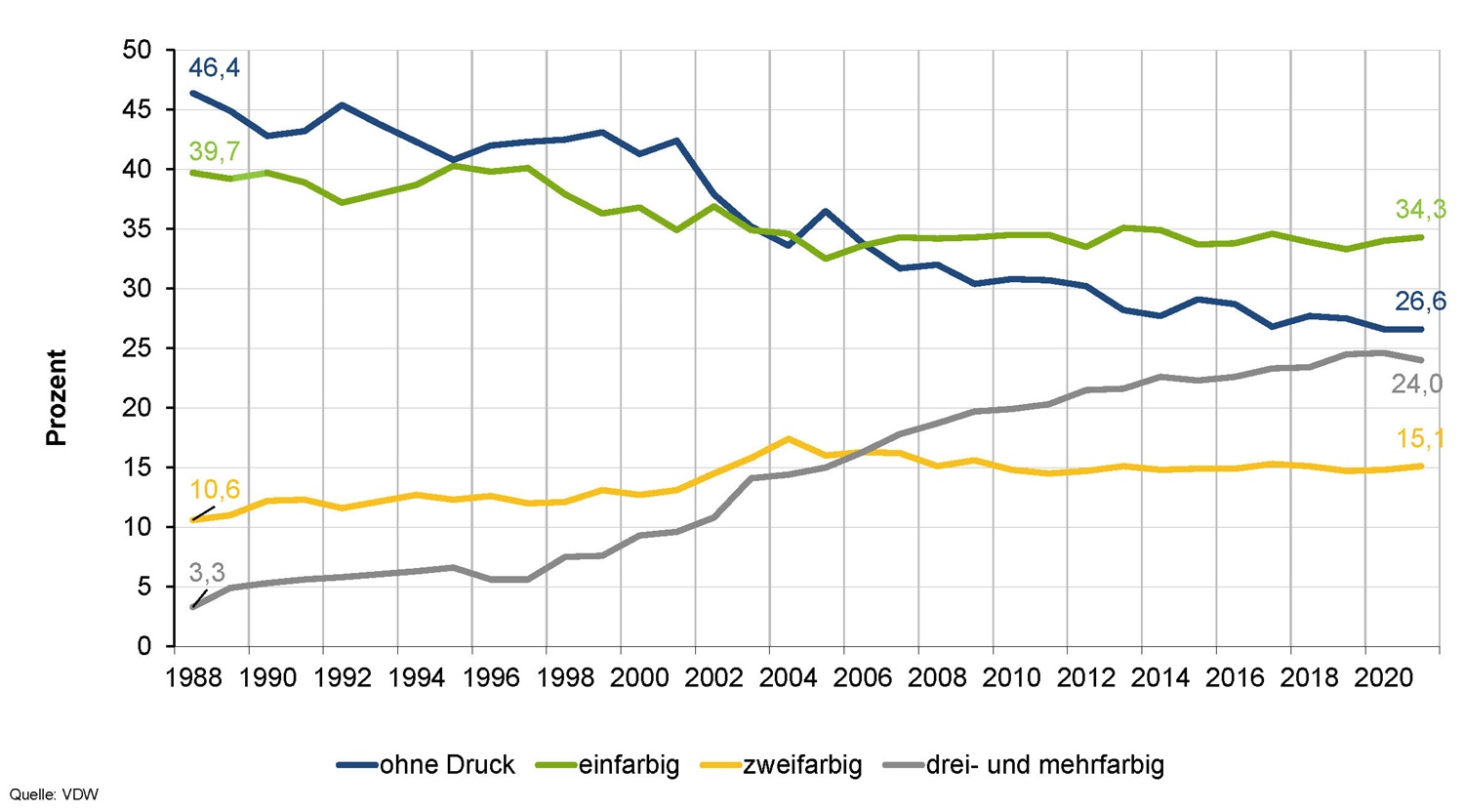P3 3-4/2022 en
Association of the Corrugated Board Industry e.V.
Focus on Corrugated Board - Growth vs. Cost Pressure
Analysis
The German Association of the Corrugated Board Industry (Verband der Wellpappen-Industrie e.V., VDW) was founded on May 25, 1948 and today represents 32 corrugated cardboard companies with around 100 plants in Germany - it thus represents around 80 percent of German corrugated cardboard production. The association represents the interests of the sector and represents its interests in relation to customer industries, trade, authorities, politics and the public. The information of various target groups is therefore of great importance. To this end, the VDW maintains active public relations work, publishes numerous publications, holds information events and is represented by experts at specialist conferences.
Dr. Oliver Wolfrum has been in charge of the association's business since July 2007 and represents the industry in public, vis-à-vis government agencies and politicians. In the P3 interview he talks about the current situation, problems and the advantages of corrugated board in product shipping.
Paper webs for cover and corrugated web are drawn in at the unwind stand of the corrugator.
Dr. Wolfrum, the 2021 balance sheet for the corrugated board industry already confirmed strong growth in the industry, but under extreme cost pressure. There is probably no talk of relaxation at the moment, right?
Unfortunately that is correct. The producer price index of the Federal Statistical Office for natural gas for delivery to industry increased by 29 percent from January to April alone. The price index for corrugated base paper, weighted by the VDW across all grades, rose by 66.8 percent from September 2020 to January 2022; the VDW-weighted price index for the particularly relevant grades based on recovered paper even climbed by 74.1 percent in the same period. Both indices have remained at this extremely high level ever since. You can't call it relaxation. Added to this are cost increases for starch, fuel and logistics, which add to the pressure.
Is the ability to deliver and thus survive given for corrugated board producers in Germany under the current circumstances?
In recent years, the VDW members have repeatedly and impressively demonstrated that they do everything they can to remain reliable to their customer industries, even under extremely challenging conditions. And with this positive attitude, they also face the current situation. However, the corrugated cardboard industry – like other sectors of the economy – is dependent on the gas supply being secured.
A significant part of the massive cost pressure is currently shouldered primarily by the corrugated cardboard industry, which cannot pass this on to the customer to the extent that is actually necessary.
Dr Oliver Wolfrum, VDW Management Director.
Are the cost increases passed on to suppliers?
The mentioned increase in the total price index for corrugated base paper - i.e. 66.8 percent from September 2020 to January 2022 - is offset by a much smaller change in the price index for corrugated board in the same period, namely an increase of only 26.9 percent. This makes it clear: the VDW members had to adjust their price level, but there is still a large gap between the price development of our most important raw material and that of our product. A significant part of the massive cost pressure is currently shouldered primarily by the corrugated cardboard industry, which cannot pass this on to the customer to the extent that is actually necessary.
In your opinion, is the right reaction and enough action being taken at the political level – both in Germany and in Europe?
Ultimately, this is about essential prerequisites for the smooth functioning of systemically important economic sectors - and these must be able to count on politicians making a correspondingly strong commitment to securing the energy supply. The corrugated board industry was included in the systemically important areas during the pandemic because of its indispensable role with regard to transport packaging for food. Two thirds of all transport packaging in Germany consists of corrugated cardboard. Food and beverages, but also intermediate goods for other industries and fast-moving consumer goods are among the most important customer areas in our industry. So we are actually an indispensable cog in the overall economic structure. What has been done on the political side in recent weeks to reduce dependence on Russian gas is undoubtedly the result of a considerable effort. Not so long ago, this would hardly have been thought possible. However, we must not let up in our efforts to better protect economic sectors such as the corrugated cardboard industry from possible negative consequences.
In your opinion, is the corrugated board industry already optimally positioned in terms of technology – keyword digitization – or is there some catching up to do? Are investments currently even feasible on the necessary scale?
The VDW members are constantly working to position themselves better and better, be it in the area of ??digitization or energy efficiency. This is a permanent learning and growth process that is never really finished. Of course, the high cost pressure, market distortions and the associated uncertainties do not make investment decisions any easier. Many companies – and not only in our industry – will certainly consider this even more carefully and set priorities.
In our opinion, the waste paper cycle is firmly established and widely accepted.
Dr. Oliver Wolfrum, VDW Managing Director.
In Germany, corrugated base paper consists of around 80 percent recycled material. Does the recycling cycle still work, or are there shifts and breaks in the supply chains due to cost explosions?
In our opinion, the waste paper cycle is firmly established and widely accepted. Consumers, municipal waste disposal companies and commercial companies all contribute to maintaining this functioning cycle and conserving resources. Waste paper continues to be a coveted raw material. The VDW has been supporting waste disposal companies for several years with the “Make it flat” campaign. With stickers on waste paper bins and containers, we remind people to use the space in it optimally and thus return as much valuable raw material as possible back into the cycle. By the way, we are currently working on a new edition of this campaign - but I don't want to reveal too much at this point.
The desire for more sustainability is becoming increasingly important among end consumers and also in industry and trade.
Dr. Oliver Wolfrum, VDW Managing Director.
What advantages does corrugated board offer in product shipping?
According to a study published last year by the Society for Packaging Market Research, 90 percent of mail order packaging is made of corrugated cardboard. There are many other reasons for this, in addition to the waste paper cycle already mentioned, which enables the recipient to easily return the raw material. Thanks to the corrugatios that give it its name, corrugated cardboard is extremely stable and resilient with a comparatively low weight. Depending on the use of the different types of paper, corrugated forms and the number of corrugated webs, finer or more robust solutions can be developed that reliably protect a wide variety of products. In the mail order business, the bandwidth ranges from small but impact-sensitive products such as smartphones to significantly heavier goods such as furniture. The right packaging is optimally tailored to the respective product and uses material as efficiently as possible - both can be implemented particularly well and in an environmentally friendly way with corrugated cardboard. The desire for more sustainability is becoming increasingly important among end consumers and also in industry and trade. In particular, the renewable raw material base and the high recycled content of the corrugated board are seen as important plus points. There is also increasing demand for packaging solutions made of corrugated cardboard that are tailored to specific products and do not require any plastic filling materials.
Last question: will there be another Corrugated Board Forum in the future?
The Corrugated Board Forum, to which we previously invited guests as part of a large trade fair, will no longer take place in this form. We had already made this decision consciously before the Corona pandemic. Instead, we launched our own webinar series as a new format in 2021. We have already implemented three of these events - and the interest was extremely high. That's why we're going to continue the series. In addition, due to the pandemic, online events have established themselves in many areas as a means of efficiently conveying information and many no longer want to do without the associated advantages. With the webinars, we have created our own forum for dialogue with our members and their customers, which fits in with the zeitgeist even better than originally hoped.
Dr. Wolfrum, thank you for the interview!






